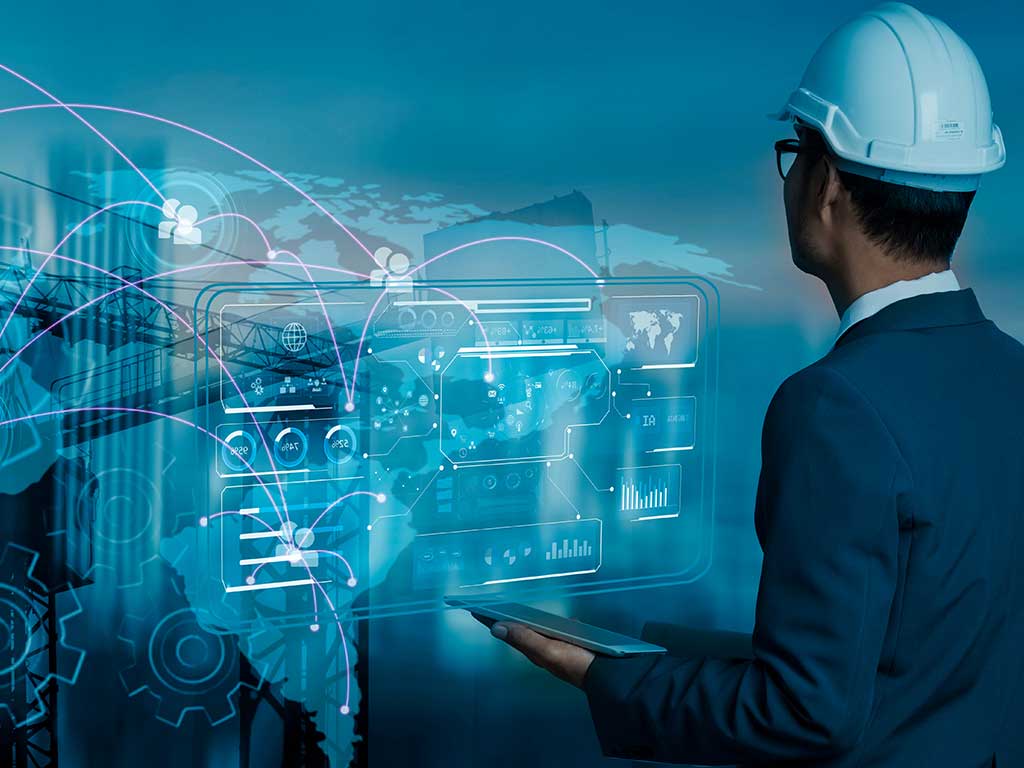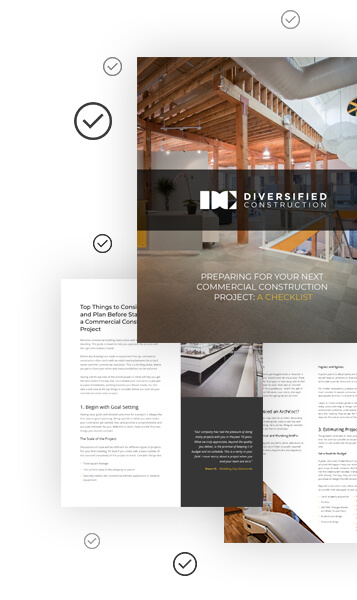Smart Buildings
Smart buildings are innovative properties equipped with cutting-edge technologies (such as the Internet of Things (IoT), artificial intelligence (AI), and data analytics) to control operations and simplify daily tasks.
By utilizing various systems and devices to create a connected and intelligent infrastructure, smart buildings are designed to optimize energy consumption, improve operational efficiency, and provide occupants with a comfortable experience.
In this article, we will explore the advantages, key technologies, and implementation process of smart buildings. Keep reading to discover why smart buildings are an ideal solution for optimizing facility management and creating a sustainable space.
Benefits of a Smart Building
Through the combination of data-driven insights and innovative technology, smart buildings offer a multitude of benefits for businesses seeking to transform their environments into more efficient, secure, and occupant-centric spaces. Listed below are some key advantages smart buildings provide:
Eco-Friendly Solutions
By prioritizing sustainable practices (like energy-efficient systems, waste management, water conservation measures, and renewable energy sources), smart buildings reduce their environmental footprint and contribute to a greener future.
Additionally, smart buildings often meet or exceed sustainability standards and certifications, such as LEED (Leadership in Energy and Environmental Design). These certifications not only demonstrate a commitment to environmental responsibility, but also enhance the building's market value and reputation.
Reduced Operating Costs
Traditional manual, on-site maintenance processes can be time-consuming, costly, and prone to human errors. Smart buildings offer a solution by implementing automated processes for certain tasks and providing real-time alerts about areas that require attention.
Proactive monitoring and data analytics help identify and address inefficiencies, reduce equipment downtime, and optimize maintenance schedules. Through energy efficient measures and automated processes, smart buildings can significantly lower operating costs.
Improved Occupant Comfort
With the use of advanced technologies, smart buildings create a comfortable indoor environment that increases productivity, well-being, and overall satisfaction of occupants. For example, smart buildings utilize advanced climate control systems that can automatically adjust temperature based on data insights, occupancy patterns, and individual preferences.
In addition to climate control, smart buildings also incorporate personalized lighting and shading systems. Lighting systems can be programmed to adjust the intensity, color, and timing. Shading systems can be programmed to adjust the position of the blinds based on the sun and the desired level of daylight – creating a pleasant and glare-free environment for occupants.
Increased Safety and Security
Through the integration of cutting-edge security systems (such as access control, video surveillance, and alarm systems), smart buildings prioritize the safety and security of occupants and assets. Through real-time monitoring and automated alerts, these systems work proactively to prevent potential incidents – allowing you to have peace of mind knowing that your workplace is well-protected.
Additionally, smart buildings increase health safety by utilizing sensors to track various air quality parameters (like carbon dioxide levels and air pollutants). By optimizing heating, ventilation, and air conditioning (HVAC) systems, smart buildings ensure the removal of pollutants and the delivery of high-quality indoor air.

Implementing a Smart Building
Implementing a smart building requires careful planning, coordination, and investment in cutting-edge technologies. Listed below are the eight essential steps to successfully implement a smart building from inception to completion:
1 - Define Objectives and Set Goals
The first step in implementing a smart building is to clearly define your objectives and set specific goals. Determine what you aim to achieve through the integration of smart technologies. Whether it's optimizing energy efficiency or enhancing security, having a clear vision will guide your decisions throughout the implementation process.
Collaborating with a LEED-certified architect and project managers can help develop a comprehensive plan tailored to your specific needs. At Diversified Construction, we help our clients determine the most suitable technologies and systems that align with their goals.
2 - Conduct a Comprehensive Assessment
Perform a thorough assessment of your existing building infrastructure, systems, and processes. Identify areas that can be enhanced or automated through smart technologies. This assessment should cover aspects such as HVAC systems, lighting, security, occupancy monitoring, energy management, and data analytics.
3 - Develop a Strategic Plan
Based on your objectives and assessment findings, develop a strategic plan for implementing a smart building. Outline the specific technologies and solutions you intend to integrate, along with a detailed timeline and budget. Consider the needs of facility managers, IT personnel, and end-users perspectives during the planning phase.
4 - Select the Right Technologies
Identify and select the appropriate technologies that align with your strategic plan. Consider factors such as compatibility, scalability, reliability, and cost-effectiveness. Collaborate with trusted technology partners who have experience in implementing smart building solutions and can provide support throughout the process.
5 - Install and Integrate the Selected Systems
Work closely with your chosen technology partners to integrate the selected systems. This includes installing sensors, connectivity infrastructure, control systems, and data management platforms. Ensure that all systems are properly configured, tested, and integrated to work seamlessly together.
6 - Analyze and Collect Data
After installation, it’s time to focus on collecting and analyzing data from various sensors and devices within the building. Implement data management and analytics tools to collect valuable insights. This data-driven approach will allow you to make informed decisions, optimize building operations, and identify areas for further improvement.
7 - Provide Proper Training
Ensure that your facility management team and end-users are adequately trained on operating and utilizing the smart building systems. Equip them with the necessary knowledge and skills to make the most of the new technologies. Additionally, provide ongoing support to address any questions or challenges that may arise.
8 - Regularly Monitor Data
Smart buildings require ongoing monitoring, analysis, and optimization to maximize their potential. Regularly assess performance, analyze data trends, and identify opportunities for further improvements. Implement a proactive maintenance strategy to address any issues promptly and ensure the smooth operation of the smart building systems.
System Management Considerations
Implementing a smart building requires careful planning, coordination, and investment in cutting-edge technologies. Listed below are the eight essential steps to successfully implement a smart building from inception to completion:
Smart buildings are revolutionizing the way we manage and operate modern facilities. However, to unlock the full potential of smart buildings, careful consideration must be given to its system management. Listed below are the key factors to consider for effective system management in smart buildings:
Data Integration and Interoperability
One important aspect of managing a smart building is ensuring smooth data integration and interoperability among different systems. Smart buildings consist of multiple different interconnected systems like HVAC, lighting, security, and occupancy sensing.
By establishing a strong data management infrastructure and using interoperable technologies, data can be exchanged and analyzed across systems. This enables better decision-making and more efficient operations.
Cybersecurity and Data Privacy
Since smart buildings rely on interconnected systems and data exchange, cybersecurity and data privacy is paramount. Building owners and facility managers must prioritize the implementation of reliable cybersecurity measures to protect against potential cyber threats and unauthorized access.
This includes network segmentation, encryption, authentication protocols, and regular vulnerability assessments. Additionally, ensuring compliance with data privacy regulations is essential to safeguard the privacy of occupants' personal information collected by smart building systems.
Continuous System Monitoring
To optimize the performance of a smart building, continuous and comprehensive system monitoring is crucial. Real-time monitoring of building systems allows for proactive identification of potential anomalies and necessary maintenance.
The advanced analytics and machine learning algorithms can provide valuable insights into energy usage patterns, occupant behavior, and system performance – allowing for continuous improvement and efficient resource management.
Scalability and Future-Proofing
Smart building system management should consider the scalability and future-proofing of the implemented technologies. As technology evolves rapidly, it is essential to select scalable solutions that can accommodate future expansion and integration with emerging technologies.
Additionally, keeping up-to-date with industry standards, protocols, and best practices ensures that the smart building remains adaptable and capable of leveraging future advancements.
Conclusion - What is a Smart Building
Through the rapid advancement of cutting-edge technologies, buildings are no longer mere structures – they have evolved into smart and intelligent entities that offer efficiency, productivity, and sustainability.
Diversified Construction specializes in warehouse design, remodeling, and new construction, with over 60 years of business experience in the Twin Cities. Contact us today at 952-929-7233 if you’re looking to start a new project.

